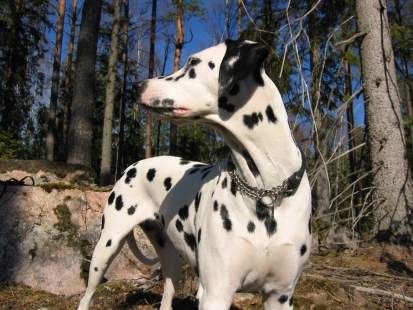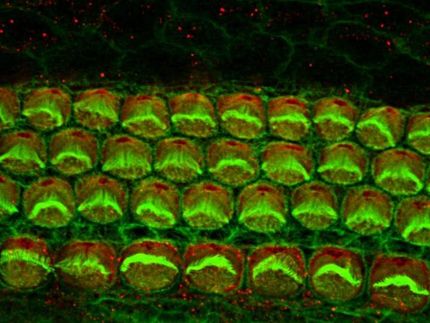Why White Dogs are White
About half of all dogs show some form of white spotting which can range from a few white marks in the Bernese mountain dog to extreme white coat color in Dalmatians and white boxer. But why have dogs so often white markings, and how can we explain how they are determined genetically? This has researchers from SLU, Uppsala University and the Broad Institute spread new light on in an article that is now published in the scientific journal PLoS One.

Dalmatian
Mattias Björkbacka, SLU
There is a widespread misconception that white spotting in dogs has arisen as a by-product when we have selected for a tame behavior.
"The main reason that dogs have various forms of white spotting is that we have deliberately chosen dogs with white spots for breeding", says Leif Andersson, one of the researchers behind the study.
This has been the breeding practice for thousands of years, which is illustrated by the Roman authority on agriculture, Columella, who already around 100 AD described that shepherds preferred white sheep-herding dogs because they were easier to distinguish from wolves if they had to chase away wolves at dawn or dusk.
In the article, the researchers show that the white coat color in dogs is caused by mutations in the MITF gene that is crucial for normal development of pigment cells. The researchers show that these mutations do not affect the MITF protein but rather its genetic regulation.
"These white markings occur not because the dogs cannot produce pigment but because they completely lack pigment cells in the skin in the areas that have white markings", says Izabella Baranowska Körberg who obtained her PhD degree at SLU on a thesis in which this study was included.
"As a result of the change in MITF gene regulation, not all pigment cells find their way to the dog's skin during embryonic and fetal development. Since pigment cells also have an important function in the inner ear some dogs (5-15 percent) with extreme white spotting as white boxers and Dalmatians are affected by impaired hearing or deafness", says Göran Andersson who together with Leif Andersson led this research collaboration
The researchers' results supports the idea that humans have bred for white spotting over thousands of years because they could show that some types of spotting were not due to a single mutation, but dependent on several interacting distinct mutations that arose at different time points.
"The fact that our domestic animals have a relatively long history (thousands of generations) and selection to change traits like coat color patterns has been very strong means that we now have a number of examples of the evolution of gene variants associated with several consecutive genetic alterations in the same gene and the MITF gene in dogs is one of the most beautiful examples of this", says Leif Andersson.
The Swedish University of Agricultural Sciences, Uppsala University and the Broad Institute has for close to ten years, had an extensive research collaboration where the dog is used as a model animal for hereditary diseases that affect both dogs and humans. Today research is performed concerning around twenty such diseases, including cancer, immune-mediated diseases, behavior, eye disease and cardiomyopathy in several dog breeds.






















































